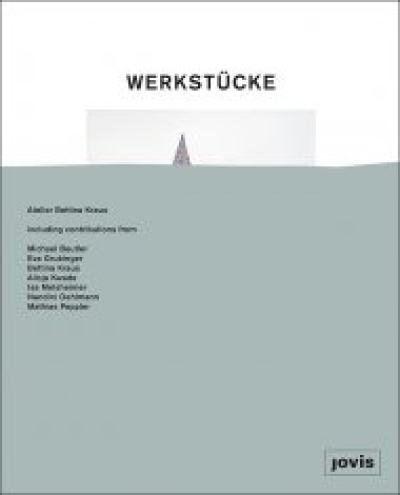
Werkstücke: Making Objects into Houses
Bettina Kraus / Michael Beutler / Eva Grubinger / Alicja Kwade / Isa Melsheimer / Nandini Oehlmann / Mathias Peppler
Niklas Fanelsa (Hg.)
Am Anfang des architektonischen Entwurfsprozesses steht die Fertigung eines Objekts, das ein präzises entwurfsspezifisches Thema handwerklich interpretiert. Dabei haben die Wahl des Materials und dessen Verarbeitung wesentlichen Einfluss auf die Wirkung dieses Objekts und umgekehrt. Im Experiment mit isolierten Aspekten wie Verortung, Maßstab, Funktion, Zirkulation und Schnittstellen werden die Objekte zum assoziativen Rohstoff für den architektonischen Entwurf. Schrittweise werden die skulpturalen Figuren, welche die jeweils individuelle Handschrift speichern, zum Haus; dabei ergeben sich laufend Fragen und Konflikte, die zu neuen Ideen von Form, Konstruktion und Raum führen. Das Objekt als dreidimensionale Skizze macht den Entwurfsprozess, der von alltäglichen Erfahrungen, gespeicherten Bildern und glücklicher Koinzidenz geprägt ist, analog und greifbar. Das Werkstück ist dabei ein Trägermedium, durch das die Ideen aus dem Kopf den Weg über die Hand nehmen.
The architectural design process starts with the creation of an object that represents a practical interpretation of a precise, design-specific theme. The choice of material, its manufacture and processing have a significant influence on the expression of an object and vice versa. As part of an experiment with isolated aspects such as localization, scale, function, circulation, and points of intersection, the objects become the associative raw material for the architectural design. Step-by-step, the sculptural figures that contain an individual signature each become a house. This procedure generates questions and conflicts that lead to new ideas with regard to form, structure, and space. As a three-dimensional sketch, the object makes the design process, which is characterized by everyday experience, stored images, and lucky coincidence, analog and tangible. The werkstück, literally translated as “work-piece,” is a vehicle through which ideas from the mind can be physically expressed.
Broschur
21 x 26 cm
144 Seiten, ca. 120 farb. Abb.
Englisch

































































































